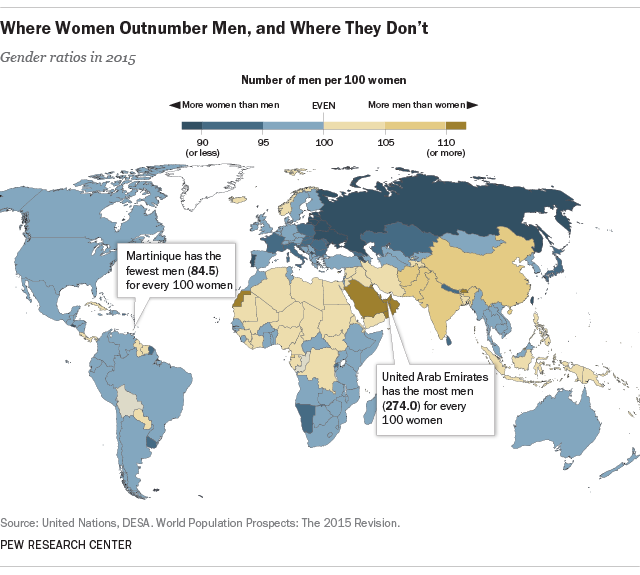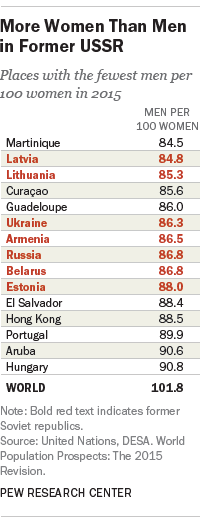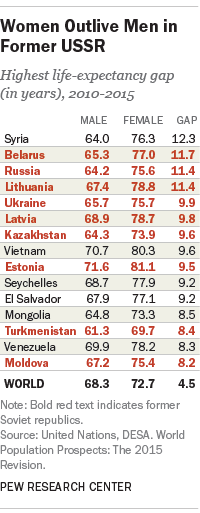As I understand it this all started with the 20 million people that died during World war II in Russia and this is still a place where around there are only 85 men for every 100 women in Russia even today.
begin quote from:
https://www.pewresearch.org/fact-tank/2015/08/14/why-the-former-ussr-has-far-fewer-men-than-women/
Read our research on: Election 2022 | Economy | Abortion | Russia | COVID-19
Why the former USSR has far fewer men than women

 In
our map above, countries depicted in the darkest blues have far fewer
men than women – and the former Soviet Union stands out from the rest of
the world.
In
our map above, countries depicted in the darkest blues have far fewer
men than women – and the former Soviet Union stands out from the rest of
the world.
This region has been predominantly female since at least World War II, when many Soviet men died in battle or left the country to fight. In 1950, there were just 76.6 men per 100 women in the territory that is now Russia. That number rose steadily in subsequent decades, climbing to 88.4 by 1995 before declining again.
The gender ratio in Russia is currently 86.8 men per 100 women, and the ratios in Latvia (84.8), Ukraine (86.3), Armenia (86.5), Belarus (86.8) and other former Soviet nations are similarly low.
(By contrast, the ratio in the U.S. is 98.3 men per 100 women, and the global ratio is 101.8 men per 100 women, according to 2015 United Nations data. The U.S. has been more female than male since at least 1950, while the global population first became majority male around 1960.)
So what are the factors that set the former Soviet bloc apart?
The population in Russia and the former USSR as a whole is older than that of the world. Most of these nations, including the most populous, also have low fertility rates compared with the global average. This skews the population’s gender ratio because older people are more likely to be female, while more younger people are male.
 Younger
men in the former Soviet Union also have an unusually high mortality
rate, which has widened the population’s gender imbalance. One way to
see this is to look at the life expectancy of men and women and the differences between those numbers.
Younger
men in the former Soviet Union also have an unusually high mortality
rate, which has widened the population’s gender imbalance. One way to
see this is to look at the life expectancy of men and women and the differences between those numbers.
Russian women born from 2010 to 2015 are expected to live to age 75.6, while Russian men are expected to live to age 64.2, a gap of 11.4 years. Other former USSR countries, such as Belarus, Ukraine and Latvia, have similarly high gaps, with many men in this area losing their lives to alcohol-related incidents, suicides and diseases, among other causes (as noted by demographer Murray Feshbach). The only nation with a higher life-expectancy gap between genders is war-torn Syria.
Alcoholism has long been a problem in the former USSR, especially for young men. A 2014 study in The Lancet medical journal found evidence that excess vodka use is a top killer in Russia, responsible for a disproportionate amount of deaths among Russian men. And a 2013 Pew Research Center survey found a stark gender divide on attitudes toward drinking in Russian society: 52% of women believe that drinking alcohol is morally unacceptable, compared with just 36% of men who say the same.

No comments:
Post a Comment